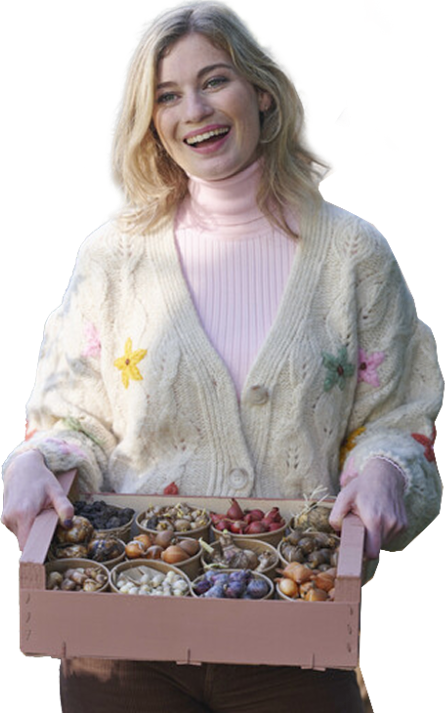
Adding them
Flower bulbs grow easily among perennials and shrubs that haven’t yet produced leaves or flowers in early spring. Some of them will also do just as well beneath trees. This means you can add flower bulbs to your garden without making major changes—and still enjoy a beautiful display of blue flowers. Many varieties of flower bulbs produce blue blooms, and plenty of them will return and flower year after year, so you can enjoy them even longer!


The top 8 blue flowers
To help you get started, here is a list of the top 8 flower bulbs that produce blue flowers. Simply choose what you think are the prettiest for your own garden. Which are your favourites?
- Dwarf iris (Iris reticulata)
- Anemone (Anemone blanda)
- Hyacinth (Hyacinthus varieties)
- Glory-of-the-Snow (Chionodoxa varieties)
- Striped squill (Puschkinnia libanotica)
- Grape hyacinth (Muscari varieties)
- Siberian squill (Scilla siberica)
- Crocuses (Crocus varieties)


Planting
Once you have purchased your flower bulbs, there comes a time to plant them in the garden or in pots. The best period for this is September through December. Just be sure to get the bulbs planted before the soil starts to freeze.
Step 1
Remove weeds and small stones and then work some garden mould into the soil to improve drainage.
Step 2
Dig a hole for a group of flower bulbs or make individual holes for planting single flower bulbs. The size of the flower bulb determines how deep it should be planted. Large flower bulbs (5 cm or larger in diameter) should be planted 15 cm deep and small flower bulbs (2.5 – 5 cm) 7 to 10 cm deep.
Step 3
Place the flower bulbs gently into the soil with the point on top. Be careful not to press down too hard on the flower bulbs, because this could damage them. Large flower bulbs should be planted 7 to 20 centimetres apart and small bulbs 3 to 7 centimetres apart.
Step 4
Cover the flower bulbs with the soil dug from the hole.
Step 5
If the soil is dry, give the flower bulbs some water.



